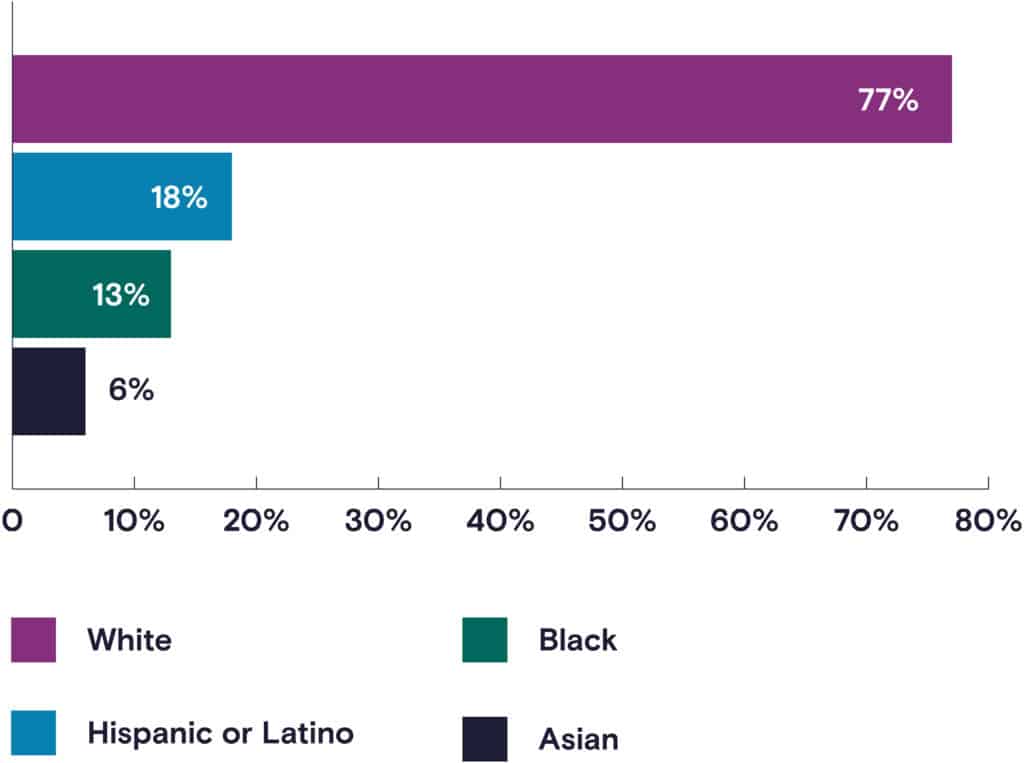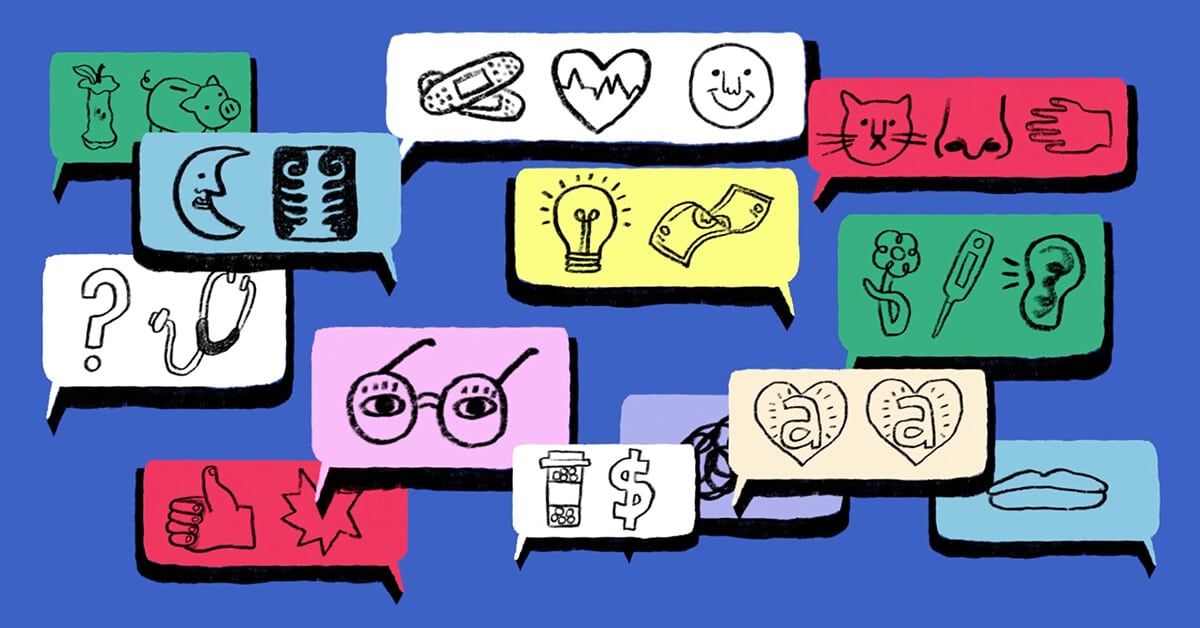It seems like every time we log in to LinkedIn these days, there’s a new HR hot topic in our feeds. The Great Resignation. Quiet quitting. Quiet hiring. Layoffs. The current conversation reflects just how much has changed in recent years: shifting power dynamics between employees and employers, tumultuous job markets, and a demand for organizations to reexamine every aspect of their workplaces.
But if you ask us here at Jellyvision for our biggest takeaway from the last three years, it’s this: now is the time to put employees first. As we face today’s challenges and the workforce becomes more diverse than ever, our employees have a wider range of needs than they once did. And as we race to hire for the year ahead, our employment value proposition relies on our ability to understand our workforce and effectively communicate how we’re supporting them.
As we’ve explored in several recent discussions, that task has only become more difficult. Why? Because there’s no such thing as a typical employee profile anymore. We can’t put our staff into neat boxes, and no two team members are the same.
So let’s take a look at who makes up today’s workforce, and explore how we can better meet their needs in 2023.
What does today’s workforce look like?
As we look at the different types of employees in today’s workforce, there’s lots to celebrate. Our companies look a lot less homogenous than they used to, and we’re benefiting from a broad range of perspectives.
Our teams are intergenerational
For the first time, our workforce is made up of five different generations:
Baby Boomers are living longer, which means they’re working longer, too. About 9% of the workforce is aged 70 and above, and that number is expected to rise to 16% in 2035. And older generations are sticking it out at the office for another reason: they’re not saving enough for retirement. The median 401(k) balance is just $35,345, which isn’t enough to live comfortably.
Meanwhile, a new age group is entering the workforce: Gen Z. While they’re just 5% of the employed population now, they’re predicted to make up 27% of the workforce by 2025. This generation has a whole new set of priorities and needs, so employers will need to adjust to meet young employees where they are.
Learn more about how to drive benefits engagement with Gen Z.
Our teams are racially diverse
In large part, today’s workforce mirrors the U.S. population:

While these strides to improve representation in the workplace are positive, there’s still a long way to go in achieving true equity. A Gallup poll revealed that 24% of Black and Hispanic/Latinx employees have experienced discrimination at work. And according to Jellyvision’s recent health equity report, there are several discrepancies in employee healthcare access:
So as we look to the year ahead, simply hiring a racially diverse staff won’t be enough. It’s time for employers to better understand every employee’s unique needs, use inclusive language, and foster an environment that’s truly supportive for employees of every background.
Our teams have unique family makeups
The traditional definition of a nuclear family went out the window a long time ago, and American families are more diverse than ever. According to the US census,
- 29% of households are made up of one person.
- 48% of families live with their own child under 18.
- 56% of young adults (18-24) live in their parental home.
And as of 2020, there were 980,000 same-sex households in the United States. Live-in grandparents have also become more commonplace as the “Sandwich Generation” cares for both their aging parents and young children.
With more unique family makeups come a wider spectrum of needs, from Medicare to adoption assistance to childcare during the workday to gender-affirming healthcare. Employers are responsible for finding out what their employees and their families need, and providing as many resources as possible to meet them.
Our teams live everywhere
No surprises here: 8 in 10 people are now working hybrid or fully remote, with only 20% of employees working fully on-site. That means your workforce is more dispersed than ever, and where employees live has a huge impact on the resources available to them.
Rural employees may not have adequate access to things like mental health care, and they may have to travel farther for everything from primary care appointments to childcare drop-off to grocery shopping. And depending on where in the country your employees are, they may be affected in different ways by weather events and natural disasters. Meanwhile, employees in urban environments have a higher cost of living and need a salary to match.
Knowing where your employees live and how their needs differ is crucial to forming strong connections with our employees and giving them the resources they need to be healthy and productive at work and at home.
How HR teams can best support a diverse workforce in 2023
Personalize the benefits experience
The benefits and resources you provide to your team are incredibly personal. With so many options to choose from, employees want individual guidance on which benefits are the right choice for them and their families.

No, you can’t be everywhere at once. But there are lots of steps employers can take to tailor the benefits experience to each and every employee:
- The message: Promote the right benefits to the right employees. Gen Z wants to hear about your student loan reimbursement offerings, while Baby Boomers are more interested in retirement accounts. Create targeted benefits messages that are highly relevant to the people reading them, so that employees can get the most out of the resources that really matter to them.
- The medium: One size does not fit all when it comes to communicating with employees. Share benefits messages on the platforms where folks are already spending time. For example, Millennials may want a text, while Gen Z might prefer a video tutorial. Don’t forget everyone is different; when in doubt—ask about individual communication preferences.
Build an equitable benefits package
Your benefits offerings and DEI initiatives shouldn’t be separate entities—they should amplify each other.
Making your benefits package inclusive starts with a holistic view: does it account for your employees’ physical, mental, and financial health? Then, it’s about exploring where there might be gaps in coverage for certain employee groups. Here are a few questions to start with:
- Does your healthcare policy cover all members of your employees’ household, including civil unions, adopted or foster children, and elderly parents?
- Does your organization provide managers with guidelines on how to provide access to flexible work arrangements for all employees who need them?
- Does your organization have benefits that are inclusive of non-binary and/or trans employees (e.g. gender transition)?
- Is your office space accessible to lactating employees and folks with disabilities?
Learn more about how to make your benefits package inclusive, from a DEI expert.
Make mental health a priority
In the last three years, mental health has been in the spotlight as we all face new challenges brought on by the pandemic. And employers have made some encouraging strides to make mental health resources more available to their workforces.
And that’s good news, because demand is high. 64% of employees said they’re seeking more mental health care now than they were pre-pandemic. But just offering the right resources isn’t enough.
So promotion is the name of the game now. In addition to your usual benefits communications, use your managers as an amplifier. Give them talking points and expectations for workplace culture, so that they can share with their direct reports and make everyone aware of the mental health resources your organization provides.
Offer a flexible work environment
Overnight, a global pandemic forced us to take everything we did at the office and figure out how to do it at home. After months (years? decades?) in quarantine, we’ve adapted. Employees are just as productive when they work remotely, and employers are saving on office overhead.
But a truly flexible work environment isn’t just about replicating the office 9-to-5 at home. It’s about giving employees the freedom to choose when, where, and how they’d most prefer to work. That means more asynchronous work, with recorded meetings and shared Google Docs, so that employees can choose the hours they work. It means office space that’s available for optional use, so that employees can have in-person collaboration sessions with coworkers. And it means at-home office stipends so that employees have access to all the tools and supplies they need to succeed.


